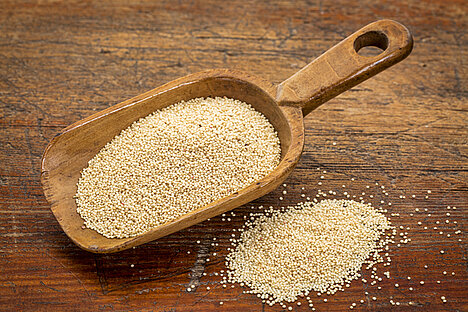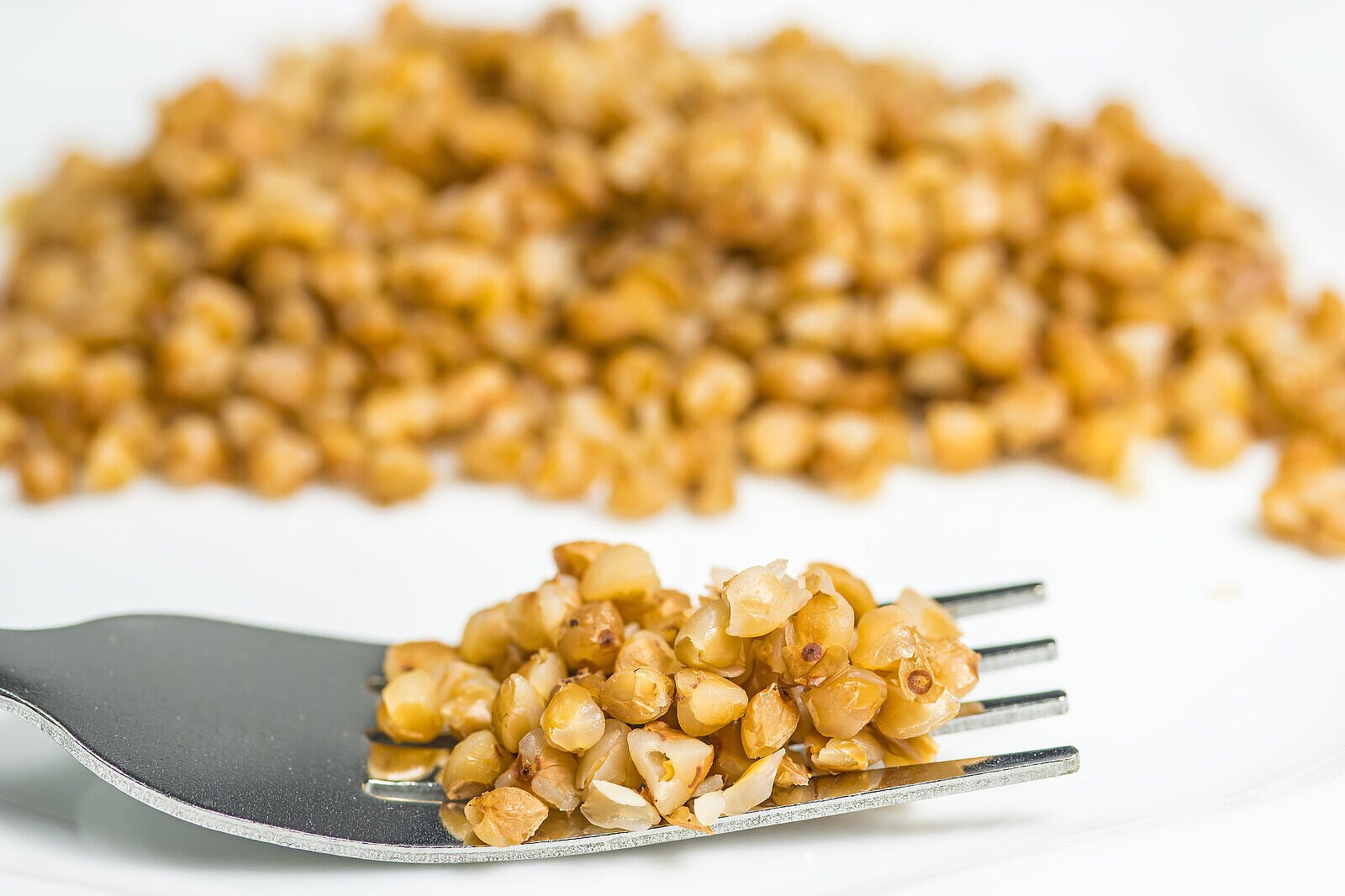Amaranth

What is amaranth?
Amaranth is not a real grain, but belongs to the so-called pseudocereals, such as quinoa or buckwheat. This means that it does not contain gluten, which is often responsible for intolerances. Amaranth originally comes from South America and was cultivated as a staple food by the Aztecs and Incas. Today it is also cultivated in Europe, Asia and Africa.
What are the benefits of amaranth for dogs?
Amaranth has many benefits for your dog's health. Here are some of them:
- Protein: amaranth has a very high protein content, which is important for muscle building and cell regeneration. It also contains all the essential amino acids that dogs cannot produce themselves and must ingest through their food.
- Minerals: Amaranth is rich in iron, zinc, potassium, phosphorus and magnesium, which are essential for blood formation, the immune system, nerve function and bone structure.
- Fiber : Amaranth contains fiber, which aids digestion, increases the feeling of satiety and can prevent cardiovascular disease.
- Antioxidants: Amaranth has a high antioxidant content, which can fight free radicals and thus protect against cell damage and inflammation.
What are the disadvantages of amaranth for dogs?
Amaranth also has some disadvantages that you should consider before feeding it to your dog. Here are some of them:
- Calories: Amaranth is very high in energy and can therefore lead to obesity if you give it in too large quantities. Therefore, pay attention to the correct dosage and reduce the amount of other food if necessary.
- Oxalic acid: Amaranth contains oxalic acid, which in high doses can inhibit the absorption of calcium and lead to kidney stones. This is a particular risk for dogs with kidney problems or a tendency to urinary stones. You can reduce the oxalic acid by washing the amaranth thoroughly before cooking and pouring away the cooking water.
- Taste: Amaranth has a slightly nutty flavor that not every dog may like. You can improve the taste by mixing the amaranth with other ingredients, such as vegetables, meat or fish.
How do you feed amaranth to your dog?
If you want to feed amaranth to your dog, you should follow some tips to optimize tolerance and nutrient absorption. Here are some of them:
- Start slowly: Introduce amaranth into your dog's diet gradually to avoid potential digestive discomfort. Start with a small amount and gradually increase it until you reach the recommended daily ration.
- Cook the amaranth: Amaranth must be cooked before consumption to increase digestibility and reduce oxalic acid. You can bring the amaranth to the boil in a pot of water and then leave it on a low heat for around 25 to 45 minutes until it is soft and fluffy. You can drain the cooking water or use some of it for the sauce.
- Mix the amaranth with other ingredients: You can combine the amaranth with vegetables, meat or fish of your choice to create a balanced and tasty meal for your dog. Make sure that you only use high-quality, fresh ingredients that are suitable for your dog. You can also add some oil, herbs or spices to improve the taste, but avoid salt, sugar or artificial additives.
- Be aware of the right amount: The amount of amaranth you can feed your dog depends on its weight, age, activity level and health. As a rule of thumb, you can cover about 10 to 20 percent of your dog's daily calorie intake from amaranth. This corresponds to about 1 to 2 tablespoons per kilogram of body weight. You should reduce the amount of other food accordingly to avoid overfeeding.
Amaranth is a healthy and nutritious grain substitute for dogs that offers many health benefits for your four-legged friend. However, you should be aware of some disadvantages and risks before feeding amaranth to your dog and follow the correct preparation and dosage.
Properties 4
Are you looking for other ingredients with a specific property?
Just click on them to find more.
If you notice any signs of hypersensitivity or poisoning in your dog, you should see your vet immediately. We are not a substitute for a vet, but we try to be as accurate as possible. Every dog reacts differently and we recommend you get a second opinion or consult your vet if in doubt.
Stay healthy and take good care of your four-legged friend!😊
Similar to Amaranth
Quinoa is a plant from the foxtail family that grows in the Andes. The seeds of the plant are known as quinoa and are similar in shape and consistency to rice or couscous. Quinoa is gluten-free and...
Cereals are the seeds of grasses, which are among the oldest cultivated plants known to mankind. There are many different types of grain, such as wheat, rye, barley, oats and maize. Cereals mainly...
Buckwheat has several benefits for dogs that you should not ignore. For one, buckwheat is a good source of plant-based protein that contains all the essential amino acids. This means that buckwheat...
Pseudocereals are seeds of plants from different families that can be used in a similar way to cereals. They usually have a nutty taste and a grainy texture. They can be cooked, baked or sprouted...



